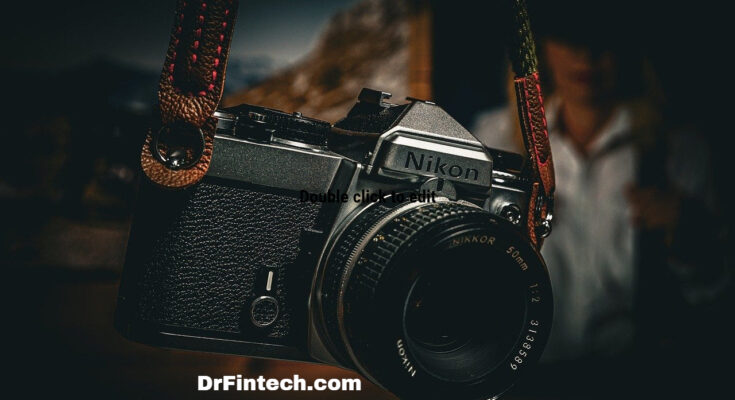Introduction
Have you ever wondered what it takes to capture breathtaking photographs without being tied down to one style or type of photography? Enter the journeyman camera—a versatile tool that adapts to various photographic needs, perfect for both hobbyists and professionals. In this article, we’ll dive into everything you need about Journeyman cameras, from their unique features to why they might be the perfect addition to your photography arsenal.
Table of Contents
| Sr# | Headings |
|---|---|
| 1 | What is a Journeyman Camera? |
| 2 | Key Features of a Journeyman Camera |
| 3 | The Versatility of Journeyman Cameras |
| 4 | Comparing Journeyman Cameras to Other Types |
| 5 | Choosing the Right Journeyman Camera for You |
| 6 | Top Journeyman Cameras in the Market |
| 7 | Journeyman Camera Accessories |
| 8 | Tips for Maximizing Your Journeyman Camera |
| 9 | Journeyman Cameras for Different Photography Styles |
| 10 | The Future of Journeyman Cameras |
| 11 | Frequently Asked Questions (FAQs) |
What is a Journeyman Camera?
A journeyman camera is designed to be the jack-of-all-trades in the world of photography. It offers a balance of features that cater to various types of photography, from portraits and landscapes to action shots and low-light scenes. Unlike specialized cameras that excel in one specific area, journeyman cameras provide a versatile platform that can adapt to different scenarios, making them an ideal choice for photographers who value flexibility.
Key Features of a Journeyman Camera
1. Versatile Lens Options
One of the standout features of a journeyman camera is its compatibility with a wide range of lenses. Whether you need a wide-angle lens for landscapes, a telephoto lens for wildlife, or a macro lens for close-ups, a journeyman camera can handle it all.
2. Robust Build Quality
Journeyman cameras are built to withstand a variety of conditions, from the harsh outdoors to studio environments. They often feature weather-sealed bodies and durable materials that ensure longevity.
3. Advanced Autofocus Systems
To capture sharp images across different scenarios, journeyman cameras come equipped with sophisticated autofocus systems. These systems are designed to track moving subjects and focus quickly and accurately, which is crucial for action and wildlife photography.
4. High Image Quality
While they may not match the resolution of high-end professional cameras, journeyman cameras offer excellent image quality that is more than sufficient for most purposes. They often feature large sensors that capture fine details and provide good performance in low light.
5. User-Friendly Interface
With intuitive controls and customizable settings, journeyman cameras are accessible to both beginners and experienced photographers. They often include helpful features like touchscreens, built-in guides, and programmable buttons.
The Versatility of Journeyman Cameras
1. Adaptability to Different Photography Styles
The hallmark of a journeyman camera is its adaptability. Whether you’re shooting a fast-paced sporting event or a serene landscape, these cameras can switch modes and settings effortlessly to capture the perfect shot.
2. Ideal for Travel
For travel photographers, a journeyman camera is a perfect companion. Its all-in-one nature means you don’t have to carry multiple cameras or an excessive amount of gear. This convenience allows you to focus more on the experience and less on logistics.
3. Suitable for Various Skill Levels
Whether you’re a beginner still learning the ropes or a seasoned pro looking for a reliable backup, journeyman cameras cater to all skill levels. Their versatile nature means you can grow with the camera, exploring new techniques and styles over time.
Comparing Journeyman Cameras to Other Types
1. Journeyman vs. DSLR
While DSLRs offer excellent image quality and a vast range of lenses, they can be bulky and complex for new users. Journeyman cameras, in contrast, offer a more streamlined experience without sacrificing versatility.
2. Journeyman vs. Mirrorless
Mirrorless cameras are known for their compact size and cutting-edge technology. However, they often come with a steeper learning curve and higher price tags. Journeyman cameras strike a balance, offering many of the benefits of mirrorless systems with added ease of use.
3. Journeyman vs. Point-and-Shoot
Point-and-shoot cameras are compact and easy to use but lack the advanced features and flexibility of journeyman cameras. For anyone serious about improving their photography skills, a journeyman camera provides a much richer experience.
Choosing the Right Journeyman Camera for You
1. Assess Your Needs
Consider what types of photography you enjoy and what features are most important to you. Do you need high-speed autofocus for sports, or do you prioritize image quality for landscapes?
2. Budget Considerations
Journeyman cameras come in a range of prices. Set a budget that allows you to get a camera with the features you need without breaking the bank.
3. Research and Reviews
Look for reviews and comparisons of different models. Pay attention to the pros and cons noted by other photographers, and consider how those points align with your needs.
Top Journeyman Cameras in the Market
1. Canon EOS R6
The Canon EOS R6 offers impressive image quality and a robust feature set that appeals to both amateurs and professionals. With its advanced autofocus and high-speed performance, it’s a top contender in the journeyman category.
2. Sony Alpha a7 III
Known for its versatility and excellent low-light performance, the Sony Alpha a7 III is a favorite among journeyman photographers. Its wide range of compatible lenses and user-friendly interface make it a solid choice.
3. Nikon Z6 II
The Nikon Z6 II combines powerful features with a durable build, making it ideal for various photography styles. Its dual card slots and extensive customization options provide added convenience and reliability.
Journeyman Camera Accessories
1. Lenses
Investing in a range of lenses can significantly enhance your photography. Consider starting with a versatile zoom lens and gradually expanding your collection based on your interests.
2. Tripods
A sturdy tripod is essential for capturing sharp images, especially in low light or when using long exposures. Look for one that is lightweight yet stable enough for your camera setup.
3. Camera Bags
A good camera bag protects your gear and makes it easy to carry. Choose one that fits your equipment and is comfortable to wear, especially if you plan on shooting for extended periods.
4. Memory Cards
High-speed memory cards ensure that your camera can write images quickly, reducing lag time. Having multiple cards also allows you to shoot longer without worrying about running out of space.
5. Extra Batteries
Journeyman cameras can be power-hungry, especially when using advanced features. Carrying extra batteries ensures you won’t miss a shot due to a drained battery.
Tips for Maximizing Your Journeyman Camera
1. Learn Your Camera Inside and Out
Spend time getting to know your camera’s features and settings. Read the manual, watch tutorials, and practice different techniques to fully understand what your camera can do.
2. Experiment with Different Styles
One of the joys of a journeyman camera is its versatility. Experiment with various types of photography to discover what you enjoy most and to develop a well-rounded skill set.
3. Join Photography Communities
Engaging with other photographers can provide valuable insights and inspiration. Join online forums, attend local meetups, or participate in photography workshops to learn from others.
4. Regularly Update Your Gear
Technology evolves rapidly, and keeping your gear up-to-date ensures you have access to the latest features and improvements. This doesn’t mean you need to buy a new camera every year, but consider updating your accessories and software as needed.
Journeyman Cameras for Different Photography Styles
1. Portrait Photography
For portrait photography, look for a journeyman camera with excellent autofocus and good low-light performance. Lenses with wide apertures (like f/1.8 or f/1.4) are also beneficial for creating beautiful background blur.
2. Landscape Photography
Landscape photographers benefit from cameras with high resolution and dynamic range. A good wide-angle lens and a sturdy tripod are essential accessories for this style.
3. Action and Sports Photography
High-speed continuous shooting and advanced autofocus are key features for action and sports photography. Look for cameras that can track moving subjects and capture multiple frames per second.
4. Wildlife Photography
For wildlife photography, a journeyman camera with a good telephoto lens is crucial. Features like silent shooting and weather sealing are also important for capturing animals in their natural habitats.
5. Street Photography
Street photographers need a camera that is compact, discreet, and quick to respond. A journeyman camera with a fast autofocus and a versatile prime lens can be ideal for capturing candid moments.
Frequently Asked Questions (FAQs)
1. What is a journeyman camera?
A journeyman camera is a versatile camera designed to handle various types of photography, offering a balanced mix of features suitable for different scenarios.
2. Why should I choose a Journeyman camera over a specialized camera?
Journeyman cameras provide flexibility and convenience, making them ideal for photographers who want to explore different styles without investing in multiple specialized cameras.
3. Are Journeyman cameras suitable for beginners?
Yes, journeyman cameras are user-friendly and offer features that cater to both beginners and experienced photographers, making them a great choice for learning and growth.
4. What are the best brands for journeyman cameras?
Popular brands for journeyman cameras include Canon, Sony, and Nikon, each offering models with various features and price points.
5. How do I choose the right lens for my Journeyman camera?
Consider the type of photography you enjoy. For example, a wide-angle lens is great for landscapes, while a telephoto lens is ideal for wildlife. Research and experiment to find lenses that suit your style.



